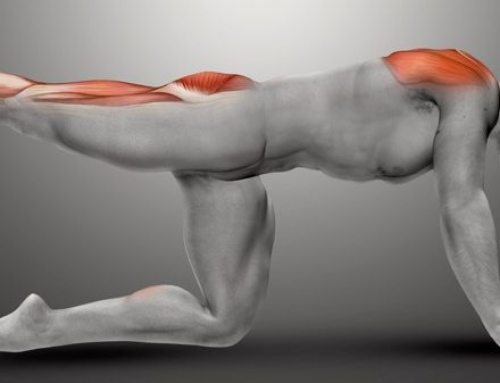By Emily Wegmann and Sarah Talley
Do you:
Leak when you jump or run?
Wear a pad to make it through an exercise class?
Feel something ‘falling out’ after a workout?
If you answered yes to any of these questions, you may need to give your pelvic floor some TLC. Urine leakage during exercise, also called stress urinary incontinence (SUI), may be common but is never normal. Pelvic organ prolapse (POP) occurs when your pelvic parts (like your bladder or uterus) drop from their normal position. SUI and POP may result from weak pelvic floor muscles (PFM), loss of structural support, or poor coordination of the PFM with the breathing diaphragm and other core muscles.
The PFMs are located at the base of your pelvis and run from the pubic bone to the tailbone. They create a sling of support for your pelvic organs, hips and spine. When the pelvic floor muscles are strong and coordinate properly they squeeze the urethra and lift the bladder, keeping you dry. The PFMs also work with your core during exercise to dynamically support your organs so you can swim, bike and run around town with your parts in place.
Different factors may contribute to SUI and POP. PFMs may weaken gradually or following surgery or childbirth. Muscles and soft tissue integrity may be affected by pregnancy or excessive weight gain. And it’s not just about strength: repetitive straining from constipation, competitive athletics, or poor lifting mechanics can increase pressure on the PFMs and pelvic organs and result in leakage or prolapse.
Not sure what to do next? Fear not – there are some simple things you can do to get you exercising with confidence!
1. Rethink your exercise program. This doesn’t mean stop exercising – just exercise differently. All of those sit-ups, burpees and jumping jacks you have been cranking out may be contributing to your leakage or prolapse by increasing force on weak PFMs and pelvic organs.
2. Just breathe. Inhale through your nose and expand your ribs and abdomen. Exhale through your mouth and let your abdomen fall. Try to keep your chest quiet and focus on your lower abdomen rising and falling with each breath. Visualize your pelvic muscles opening and relaxing with the inhale.
3. Do some Kegels – without holding your breath. Keep your breathing relaxed as you contract and relax your muscles. Gently squeeze and lift your PFMs as you exhale and release as you inhale. You should feel your deep abdominal wall gently contract and relax with your PFMs. Once this is easy, try some gentle five- to 10-second holds with equal rest – still breathing! Practice makes perfect – try a few reps lying down, sitting, standing, walking and lifting.
Urinary leakage and pelvic prolapse don’t mean you have to stop doing the things you love. There are often simple things you can do that can make a big difference in your symptoms to get your training back on track.
# # #
Emily Wegmann, MPT, OCS and Sarah Talley, PT, DPT are co-owners of Carolina Pelvic Health Center, Inc. and specialize in treating pelvic pain and weakness in men & women of all fitness levels. Sarah is a Boston qualifier and previous Ramblin’ Rose participant. Curious about pelvic physical therapy? Visit www.carolinapelvichealth.com.





